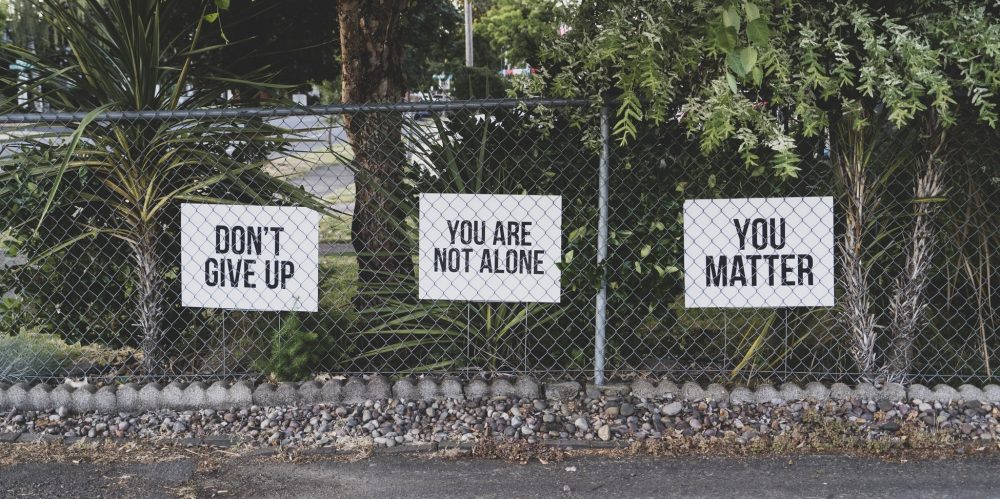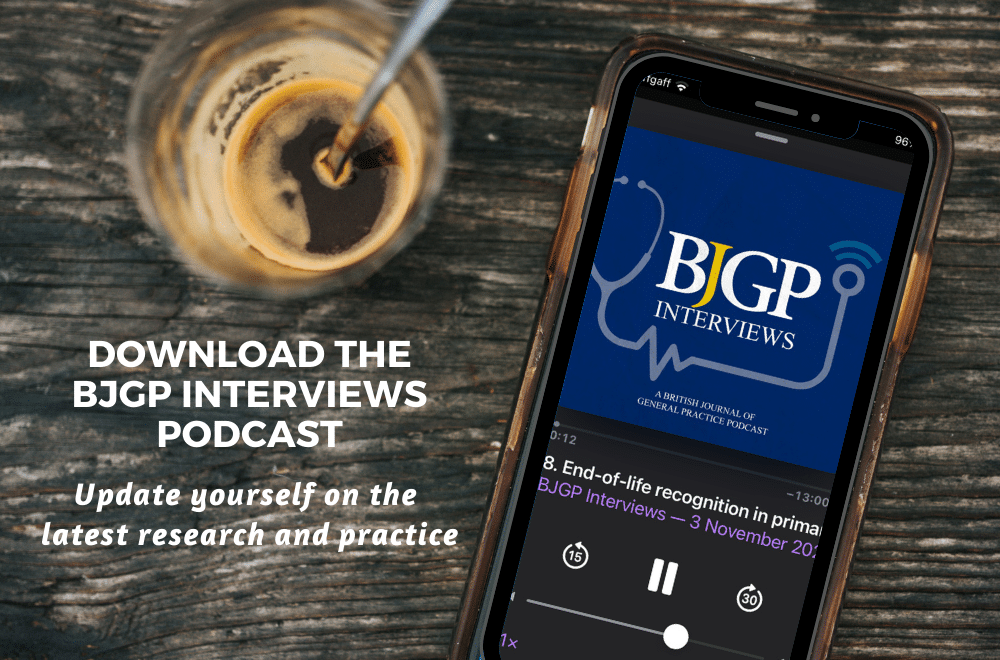 Maria Michail is a Senior Research Fellow at the Institute for Mental Health, University of Birmingham. She has expertise in suicide prevention research and has in the past worked with the RCGP to develop an educational resource to support GPs in the assessment and management of suicide risk
Maria Michail is a Senior Research Fellow at the Institute for Mental Health, University of Birmingham. She has expertise in suicide prevention research and has in the past worked with the RCGP to develop an educational resource to support GPs in the assessment and management of suicide risk
People with self-harm and suicidal behaviour often present to primary care to seek help. In fact, 80% of those who die by suicide contact primary care in the year (even months) prior to the suicide.1 We know from our work2 and that of others3 that GPs are a trusted and valued source for help-seeking among those who are at-risk of suicide.
Suicide prevention remains, however, a challenge for primary care with many GPs citing constraints including time pressures, lack of training and resources, and lack of clear and effective care pathways.4 Managing risk in primary care, with little input from other professionals or agencies, is an ongoing concern for many GPs. As one GP, I recently spoke to, said: “There’s nothing worse than losing a patient to suicide. What it comes down to is this: How can I keep this patient safe?”
“There’s nothing worse than losing a patient to suicide…. How can I keep this patient safe?”
This is where safety planning comes in. Safety planning is a simple and brief intervention5 whereby a clinician and a patient work collaboratively to identify:
i) Signs (e.g. behaviours, feelings or situations) in the patient’s life that can trigger a suicidal crisis.
ii) Protective factors such as coping strategies or resources the patient can use before or during a suicidal crisis to help them cope.
Why is safety planning important?
Because during an acute suicidal crisis, what people often experience is hopelessness along with a claustrophobic sense of being trapped. Feeling like there is no hope that things will ever get better; and no way of escaping from the pain. During a suicidal crisis, what can make a difference is having a list of tools, coping strategies and resources patients can use to help them break the cycle of suicidal thinking.
Safety planning is recommended as best practice for the management of suicide risk by NICE. New evidence published in the British Journal of Psychiatry shows that safety planning can reduce the risk of suicidal behaviour by 43% among patients who have received such an intervention. For GPs, safety planning can be a practical way of identifying risks and needs in primary care but also key for building a trusting relationship with a patient.
Five key questions can be used by GPs5 to co-create a safety plan with a patient:
1. What are those signs (e.g. stressful situations, distressing thoughts and feelings) that might trigger your suicidal thoughts?
2. What are some of the things you can do to distract yourself when having suicidal thoughts?
3. Whom would you turn to (e.g. friend, family member) or where would you go for help when feeling suicidal?
4. Which professionals or agencies can you contact when feeling suicidal (e.g. helplines, emergency services)?
5. What things (e.g. sharp objects, medication) can we remove or limit access to in order to keep you safe?
Some practical tips about co-creating a safety plan:
• Write down the safety plan using the patient’s own words- if the plan is personalised it would be easier for the patient to engage with it.
• Keep it brief and simple.
• Work with the patient to identify reasons to live; for example, what keeps them going; what do they look forward to in the future.
• Give the patient a copy of the safety plan to take with them so they can use it whenever they feel suicidal.
Safety planning is a quick, practical and effective intervention, grounded in the realities of general practice, that can save lives.
References
- Stene-Larsen K, Reneflot A. Contact with primary and mental health care prior to suicide: A systematic review of the literature from 2000 to 2017. Scandinavian Journal of Public Health. 2019;47(1):9-17. doi:1177/1403494817746274
- Farr J, Surtees ADR, Richardson H, et al. Exploring the processes involved in seeking help from a general practitioner for young people who have been at risk of suicide. Int J Environ Res Public Health. 2021;18(4):2120
- Bellairs-Walsh I, Perry Y, et al. Best practice when working with suicidal behaviour and self-harm in primary care: a qualitative exploration of young people’s perspectives. BMJ Open. 2020;10(10):e038855
- Michail M, Tait LExploring general practitioners’ views and experiences on suicide risk assessment and management of young people in primary care: a qualitative study in the UKBMJ Open 2016;6:e009654. doi: 10.1136/bmjopen-2015-009654
- Stanley, B, Brown, GK. Safety planning intervention: a brief intervention to mitigate suicide risk. Cogn Behav Pract 2012; 19(2): 256–64
- Strengthening the frontline. Investing in primary care for effective suicide prevention. Centre for Mental Health & Samaritans, London 2019.
Featured photo by Dan Meyers on Unsplash





Please help everyone to learn about the risks of antidepressants … and indeed other medications. We are seeing too many people caught out by this.
Doctors and Patients.
https://www.missd.co/
https://akathisiaalliance.org/
Maria Michail is an Associate Professor at the Institute for Mental Health, University of Birmingham, with expertise in suicide prevention across primary care settings.
We often hear how suicide prevention is an issue for specialist mental health services. Is it though? GPs are often the first and last healthcare contact for those who die by suicide, including young adults.1 Self-harm presentations among young people in primary care have increased; and young females who self-harm, are more likely to present to general practice than any other healthcare setting.2 Self-harm is one of the strongest predictors for suicide.3
General practice is the bedrock of our NHS, and GPs can play a unique role in supporting young people at-risk of suicide.
Young people with lived experience of self-harm and/or suicidal behaviour face a number of challenges, or perhaps dilemmas, when thinking about seeking help from their GP,4 starting with whether a GP is the right source of help, as clearly illustrated in Hayley’s quote:4
“I remember sitting in the waiting room, and that was not pleasant because people were coughing and sneezing, and I was like ‘why am I here? I am not coughing or sneezing’ I had lots of internalised stigma about the GP, without really knowing it”
Many young people are apprehensive because they do not know what to expect from a GP consultation; what questions they might be asked, how much they should share with their doctor, and what their doctor would do with that information. Young people who are suicidal often talk about how difficult it is to find the right words to describe how they feel. Because of this, many fear that they might not be taken seriously.4
#MyGPguide is an evidence-informed resource co-designed with young people for young people with lived experience of self-harm and/or suicidal behaviour to prepare them for their GP consultation offering vital information and advice on:5
What to consider before they visit their doctor, including preparing questions and booking an appointment.
How to manage the consultation, what their rights are with respect to confidentiality, what questions their doctor might ask them, and how to manage discussions about medication, safety planning and referral to mental health services.
What to do after the consultation and how their doctor can support them including signposting and accessing professional support.
A video version of #MyGPguide, co-produced with young people, brings the guide to life by communicating key messages in an interactive and engaging way.
So, how can GPs use #MyGPguide to support young people and facilitate the best consultation?
Informal discussions with GPs have highlighted the following ways in which this guide could be used in routine practice:
Signposting young people: The guide offers a range of resources and information (e.g. helpline organisations, digital support services) GPs could use to signpost young people to. This can be helpful whilst young people wait for a follow-up appointment; an initial assessment with specialist services, or simply for self-management.
Alleviating concerns about privacy and confidentiality: Explaining confidentiality and its limits clearly and as early in the consultation as possible can create a safe space for young people to talk openly about self-harm and/or suicidal experiences.
Safety planning: Self-harm and suicidal thoughts and feelings come and go. However, it can be difficult for a young person to manage these feelings when in distress; and know what to do or who to turn to. Working with the young person collaboratively to draw a plan to keep them safe is a simple and effective intervention, which could save lives (https://bjgplife.com/safety-planning-a-simple-and-effective-intervention-that-can-save-lives-how-can-we-work-together-to-keep-you-safe/ )
Following a GP consultation: Many young people do not know what to expect or sometimes may underestimate the time it takes for a referral to be processed or an initial assessment to take place. #MyGPguide offers information about “what next?” As a GP, managing expectations, being transparent about what the next steps are, and keeping young people informed goes a long way into maintaining a trusting therapeutic relationship.
Consultations about self-harm and suicidal thoughts and feelings can be challenging for both GPs and young people. #MyGPguide, along with other online resources (https://www.rcgp.org.uk/clinical-and-research/about/clinical-news/2018/february/mental-health-in-young-people-top-tips-for-gps.aspx ) we have designed with the RCGP, offer evidence-based, accessible and practical tips to facilitate the best consultation and support young people at-risk of suicide.
Suicide prevention requires a multi-faceted, whole system approach. As part of this, GPs situated at the heart of communities can play a vital role.6
DOI: Maria Michail is the lead author of #MyGPguide and the Suicide in Children and Young People: Tips for GPs article, published in the RCGP Mental Health Toolkit. This is a non-commercial product for which the authors receive no royalties.
References
Bryan CJ, Rudd MD. Managing Suicide Risk in Primary Care. Springer Publishing Co, New York, NY, 2011.
Marchant A, Turner S, Balbuena L, et al (2020). Self-harm presentation across healthcare settings by sex in young people: an e-cohort study using routinely collected linked healthcare data in Wales, UK. Arch Dis Child; 105:347-354
Suicide by children and young people. National Confidential Inquiry into Suicide and Homicide by People with Mental Illness (NCISH). Manchester: University of Manchester, 2017.
Farr J, Surtees, ADR. Richardson, H.; Michail, M. (2021). Exploring the processes involved in seeking help from a general practitioner for young people who have been at risk of suicide. Int. J. Environ. Res. Public Health; 18(4), 2120.
Michail M., Hunter, R., Mitchell L., Morgan J., Rathore I., Reid K., Tresadern C., Williams B., Campbell N. Visiting your General Practitioner: A guide for young people with lived experience of self-harm and suicidality. Birmingham: Institute for Mental Health, School of Psychology, University of Birmingham, 2021. doi: https://doi.org/10.6084/m9.figshare.17069660.v1
Michail M., Mughal F., Robinson J. (2020). Suicide prevention in young people: Optimising primary care. Br J Gen Pract; 70(692):104-105.
Featured image by Callum Skelton at Unsplash